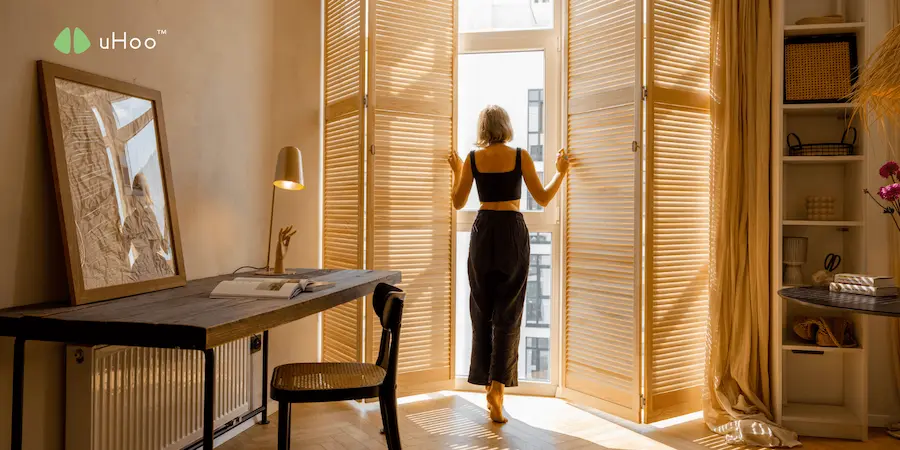The decision of when to let fresh air in is far more complex than it seems. It’s not as simple as feeling a bit stuffy and opening a window. For homeowners, especially those with children or family members with allergies or asthma, this decision can be a critical one that directly impacts health.
Knowing when to let fresh air in is essential for flushing out indoor pollutants, but doing so at the wrong time can introduce outdoor allergens and pollutants, creating a problem rather than solving one. A strategic approach, guided by real-time data, is the only way to ensure your home’s air is as clean as possible.
The “right time” on when to let fresh air in depends on several key factors, both inside and outside your home.
- Indoor Pollutant Buildup: The primary reason to ventilate is to remove indoor pollutants. Carbon dioxide (CO2) is a good indicator of stale air. As we breathe, we exhale CO2. In a sealed home, CO2 levels can rise quickly, leading to drowsiness, fatigue, and reduced cognitive function. Other indoor pollutants include Volatile Organic Compounds (VOCs) from cleaning products and furniture, and particulate matter (PM2.5) from cooking and burning candles. When these levels get too high, you need to bring in fresh air.
- Outdoor Air Quality: Opening a window is only a good idea if the air outside is cleaner than the air inside. This is where things get tricky while learning when to let fresh air in. During pollen season, opening a window can trigger allergies. During times of high traffic or industrial activity, you can introduce harmful pollutants like nitrogen dioxide and fine particulate matter. In a home near a rural area, you might need to be mindful of seasonal pesticides or agricultural dust.
- Humidity and Temperature: Ventilation also plays a role in managing indoor temperature and humidity. A hot, stuffy room might just need a cool breeze. A room with high humidity could benefit from an exchange of air to prevent mold growth. However, if the outdoor air is even more humid, you could be making the problem worse.
So, how can a homeowner keep track of all these variables? This is where the uHoo air quality monitor provides an invaluable service. uHoo is a smart device that gives you the real-time data you need to make informed decisions. It monitors your indoor air for CO2, VOCs, PM2.5, and humidity, so you know exactly when your indoor air quality is declining.
Simultaneously, it provides you with an Outdoor Air Quality Index (AQI), so you can check the pollen count and pollution levels before you open a window. The uHoo app provides clear, easy-to-understand insights and personalized recommendations. For example, it might tell you, “Your CO2 levels are high, and the outdoor air quality is good. It’s a great time to open a window for 15 minutes.” This removes the guesswork and empowers you to confidently manage your home’s air.
Knowing when to let fresh air in is the key to a healthy home. It’s about a strategic, data-driven approach that ensures you’re always making the best choice for your family’s health.

